MARKET OVERVIEW
The Global Central Pivot Irrigation Systems market mostly comprises advanced irrigation equipment enhancing agricultural productivity and water efficiency. The typical system works by moving a rotating sprinkler head along a length of pipe, pivoting it at a point in space so that water is distributed in a concentric pattern over circular field. Agriculturalists will continue to use these for addressing issues concerning irregular rainy patterns and increasing requirements for sustainable forms of irrigation. As major concerns vary from place to place regarding water conservation, the requirements for automated solutions to deliver such controlled and efficient irrigation would still drive this industry into the future.
The Global Central Pivot Irrigation Systems have an important part to play in the superior water application solutions across these vast farming areas. It comprises fully automated irrigation systems, which consist of rotating machines to uniformly cover large areas for irrigation application. Agricultural operations continue to be dependent on precision technology, with central pivot irrigation systems continuing to be an essential tool for optimizing resources, water use, and returns from crops.
The adaptability of central pivot systems ensures the diversity of ecosystems with which it can cope such that even smallholders can manage to grow crops they want from cereals to vegetables. The Global Central Pivot Irrigation Systems market is built around innovative engineering solutions enabling customized irrigation patterns so that irrigation meets the requirements of different soil types and crops. As farmers try to increase efficiency without compromising yield quality, precision irrigation will play an increasingly important role. Most probably, big-scale commercial farms will be the target for central pivot irrigation due to automated controls and sensor-driven technology, which will distribute water in a well-regulated manner.
The Global Central Pivot Irrigation Systems market is subject to technological advancements in irrigation equipment, evolving agricultural, and water management policies. Even in the future, governments and environmental agencies will stress responsible water use, putting pressure on the agricultural sectors to invest in those systems that support conservation. As the regulatory framework changes, manufacturers will focus on developing new solutions that will live up to evolving standards for sustainability while improving irrigation efficiency.
In the future, maintaining the Global Central Pivot Irrigation Systems market will integrate digital instruments with irrigation systems. Automation and remote monitoring facilities will enable real-time adjustment by farmers depending on soil moisture levels and influence changes in weather conditions. Therefore, these developments will increase the precision of irrigation and reduce uncontrolled runoff and unnecessary utilization.
Global Central Pivot Irrigation Systems market is estimated to reach $6417 Million by 2032; growing at a CAGR of 13.2% from 2025 to 2032.
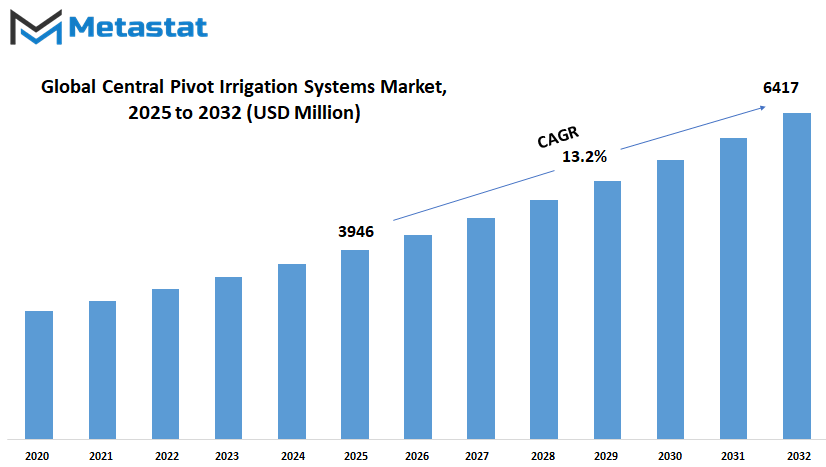
GROWTH FACTORS
The global central pivot irrigation systems market in future will undoubtedly continue to be sustained by common research and development activities currently undertaken to make the systems better in water conservation and their durability improvements. Assured advancements in irrigation technology using smart sensors with data analytics will lead to real-time monitoring and decision-making in irrigation practices. It will be possible for farmers to develop irrigation schedules that conform to soil moisture levels, weather forecasts, and crop needs. Such use of resources assures efficiency. These advancements will soon become common, and even small and mid-sized units will have the potential to access them.
Leading to the adoption of central pivot irrigation systems is the ever-increasing demand for efficient water management in agriculture. Farmers always look for optimization of irrigation methods for better yield of crops with the least wastage of water. With agricultural practices spreading to arid and semi-arid lands, the demand for irrigation technologies would go up steeply in the future, allowing mitigation against water scarcity and drought conditions. Besides, the central pivots act as a more economical way of distributing water over large fields. This makes them essential equipment for modern farming.
Central pivot irrigation systems have some limitations. The high installation and maintenance costs associated with these systems normally become a bottleneck for small-scale farmers who practice agriculture under extremely limited financial conditions. Cost considerations in purchasing equipment and building infrastructures, as well as sustaining regular maintenance, tend to block the widespread adoption of these systems. Water consumption and land degradation during irrigation also raises environmental challenges in regard to regulations. With the growing importance of sustainable agricultural practices, public outcry against irrigation methods increases and makes way for discussions about appropriate use of water.
Technology has emerged to determine tomorrow's effectiveness and sustainability of central pivot irrigation systems. Automation and remote monitoring enable farmers to adjust the timing of irrigation precisely according to its need at the place where it is consumed. Precision irrigation addresses the crops' exact need for water without allowing excess runoff and soil erosion. It provides maximum productivity while making systems adaptable to changes in climatic conditions and unpredictable weather patterns.
Global agriculture continues to grow and so does the issue of balancing productivity with sustainability; this will define the course of the future for the central pivot irrigation market. While finance and environment will always remain constraint to some extent, technology keeps on that opening avenues for better, more efficient, and sustainable solutions for irrigation.
MARKET SEGMENTATION
By Type
Efficient and sustainable irrigation methods will be the determinants for agriculture's future, with Global Central Pivot Irrigation Systems being one of the main methodologies. From boosting food production to optimizing water use, this irrigation technology will try to fulfill all duties. Farmers will require systems that give an opportunity to work every land efficiently and conserve water. This technique will go far in bringing that balance.
With the ever-changing agricultural dynamics, the need for irrigation systems that do provide reliable and consistent water distribution will keep increasing. Global Central Pivot Irrigation Systems will be categorized based on the size of the land under cultivation. For smaller fields, these systems will ensure that water is available just as it should, such that crops receive enough moisture for good growth without rampant water use. Systems serving medium fields will ensure a regular rate of application of water over large areas for supporting a range of crops needing different water patterns. In the case of large fields, the maximum impact will be found as these systems help in making efficient use of human labor, resulting in higher yields and better management of resources.
The irrigation system will become a lot more efficient because of technology. InTelligence, automation will give farmers remote monitoring and control over irrigation operation. Sensors would provide real-time data on soil moisture to avert under-watering and over-watering. This would not only foster crop health but also facilitate less consumption of water for agriculture sustainability. Development of irrigation systems integrated with machine-learning and artificial intelligence for predictive analysis of suitable watering schedules based on climatic variations and soil conditions will make agriculture more adaptable, ensuring wise use of its resources.
Global Central Pivot Irrigation Systems would be indispensable to address climate change conditions. Extreme drought and erratic rain patterns will make raising food crops by any traditional farming methods almost impossible; therefore, Global Central Pivot Irrigation Systems are an essential solution to sustaining food production. By managing water use, these systems will foster future agricultural sustainability and less reliance on bizarre nature. Farmers will have a system that guarantees constant productivity, even in areas facing scarcity of water.
A steep rise in demand for food inevitably exists, with the world population forecasted to increase; therefore, efficient irrigation systems are a necessity and not an option. The installation of these systems would not only raise agricultural productivity but would also support responsible water use. Farmers who actively invest in modern irrigation technologies will safeguard their harvests and make agriculture resilient and productive. The development of Global Central Pivot Irrigation Systems will be a defining thing for food security among future generations.
By Crop Type
The highly anticipated future of agriculture is heavily dependent on advancements in technologies that will enhance the efficiency and sustainability of all agricultural practices. An example of innovations in this direction includes Global Central Pivot Irrigation Systems which continue to spread into other countries. Such innovations in irrigation have continued to propel farmers into wise management of their water while realizing high yields. The higher the demand for food, the greater will be the need for better and even more efficient irrigation methods due to changing climatic conditions leading to a lack of reliable rainfall.
In the future, the expansion of Global Central Pivot Irrigation Systems will rely on numerous advances, such as further development in automation, precision farming, and sustainable water management. The wise researcher will probably become dependent on smart technology-managing the distribution of water and monitoring soil moisture more accurately. Not only will this help in reduced water wastage, but it will also help increase crop productivity. Moreover, adjusting irrigation schedules based on real-time data will improve resource use to increase farmers' harvest and minimize the use of water.
The market is sub-divided into exclusive types of crops, such as cereals, oilseeds and pulses, and others. The scope in each category has its challenges and opportunities for irrigation. By far, the greatest requirement of the international community in food is cereals. They have to have stable application of water throughout the growing period. The level of production continues to increase, and farmers will seek better means to guarantee stable production. For oilseeds and pulses that are important for both food and industrial purposes, irrigations will be crucial for successful completion of their growth cycle. Other crops such as fruits and vegetables will also require a specially tailored irrigation approach in terms of their quality and quantity.
Looking into the future, irrigation will be greatly influenced by economic sustainability. Water-sparing innovation will become part and parcel of Global Central Pivot Irrigation Systems to ensure viable agricultural productivity in future. Remote sensing, artificial intelligence, and automated controls save a lot of water for farmers. Policies developed by government and agricultural organizations will also keep focus on creating platforms that will encourage responsible use of water while single-handedly reaching out to farmers using such systems.
As the needs of agriculture evolve, increasingly complex advanced irrigation solutions will find more and more of a place among irrigation practices. Efficiency, sustainability, and adaptability will define the future of Global Central Pivot Irrigation Systems. More and more farmers will depend on these systems for the most dependable growth of their crops, hence realizing food security and economic stability.
By Mobility
The Global Central Pivot Irrigation System is changing the way farmers manage their agriculture by providing efficient ways for optimized water distribution and improved crop yields. As technology continues to evolve, such systems will become more prevalent in the help they provide for satisfying the ever-increasing demand for food production across the globe. Nowadays, farmers are beginning to realize they need to save water and still produce using this efficient method of saving on water use.
Because of the growing discussion about sustainability, the innovation in the market is now up to very high levels. Automatic control and telemetry systems enable farmers to apply their watering accurately to minimize water consumption while delivering the exact required amount to their plants at the right time. These systems can be combined with sensors and weather data, thus contributing to the overall performance of the systems, helping the farmers to adjust with adaptability towards the changing climatic conditions.
Mobility is one big factor that makes a difference in this market. They are broadly classified into two categories: stationery and mobile. A fixed system remains installed at a site, and so holds good for lands with widely fixed irrigation needs. It has full scope coverage for vast areas while requiring minimum manual intervention. On the contrary, a mobile system proves to be flexible to a farmer as it can be moved to any area according to necessity. This is very helpful on farms that have diverse terrains or try to maximize its water use across the various plots of land.
The future of these irrigation systems shows increased adoption as future agricultural demands change. The next stages of progression may include the development of more advanced automation applications, AI-powered monitoring, and eventually renewable energy integration. With smart technology, these systems will always become more efficient day by day and help the farmer with cost-effective and more sustainable production. By now, the broad push towards green farming will ensure further advancements in these irrigation forms, thereby making them indispensable parts of new-age agriculture.
Government policies and incentives to promote efficient water use will also spur worldwide adoption for these systems. Initiatives supporting sustainable agriculture are already underway in many parts of the world and will continue as commitments towards this goal are solidified. Maximizing crop production and minimizing water use is an excellent argument for investment, both in small farms and large commercial ones.
Future developments in materials and designs will eventually lead to more robust and flexible irrigation methods. These systems will grow and continue to change with new research and innovations in their workings, bringing further benefits to agriculture. The advancement of technology will enable farmers to utilize even more intelligent and effective tools while ensuring effective food production with the least environmental damage.
By Components
With modernization in irrigation technology, the agriculture industry is expected to be heading towards efficiency and sustainability. The development of central pivot irrigation systems will play a pivotal role in meeting the world's demand for food for the future. These systems will develop further methods for farmers to improve water distribution management. The need for reliable irrigation solutions will increase as the climate becomes erratic. Thus, technology is to a large extent modern farming.
Well, all in all, a central pivot irrigation system acts by rotating the fixed pivot point while sprinkling water about a circular field. Improvements in various components of the system yield better water conservation and better crop production over time. The control panels will now integrate smart technology into real-time monitoring and adjustments. This would thus make it possible for the farmer to respond quickly to changing conditions, ensuring that crops receive the accurate water required for their growth.
There will also be great advances in the construction of these systems, span sections, which connect different parts of the system, and be made of much stronger and lighter materials to increase their strength and durability while reducing maintenance costs. Depending on sprinkler drops, better water dispersion will be achieved, cutting down on waste and over-irrigation. These changes will also lead to better and more efficient water application while resolving the problems of resource depletion and environmental degradation.
Another major area of transformation is the tower drive wheels. These wheels are responsible for moving the irrigation system, and they will have their efficiency increased in future innovations. The improved traction and self-adjustable mechanisms would minimize energy consumption and reduce wear and tear, thereby providing the needed long-term reliability of the systems. Drive trains, majorly providing the energy for movement, will also be improved by energy-efficient motors and automated controls.
These advancements are bound to be fruitful outside agriculture. The number of people in the world is ever increasing, and thus, there has to be a greater pressure to produce more food at less cost. The efforts would be possible with the central pivot irrigation systems and their extremely efficient use of water for consistent irrigation. As technology comes up yet again, they will be constructed even more intelligently using data analytics and weather forecasts to prepare accurate irrigation schedules.
And, probably, going for quite some years to come, sustainability will be the continuous impetus for such innovations. The farmer will be able to rely on less consumer water, less energy cost, and greater productivity. Adoption of these practices will ensure that they are retained for future generations, who could depend on agriculture as a stable source of food.
|
Forecast Period |
2025-2032 |
|
Market Size in 2025 |
$3946 million |
|
Market Size by 2032 |
$6417 Million |
|
Growth Rate from 2025 to 2032 |
13.2% |
|
Base Year |
2024 |
|
Regions Covered |
North America, Europe, Asia-Pacific, South America, Middle East & Africa |
REGIONAL ANALYSIS
The Global Central Pivot Irrigation Systems show the influence of several localized factors that either promote or retard demand, adoption, technology development, and sustainability initiatives. In various parts of the world, adoption of these systems is a function of climate, agricultural requirements, and governmental policies. As agriculture moves forward, irrigation efficiency is going to be more important in fulfilling global food production needs.
North America contributes substantially to this market, where the systems are widely adopted. North America has large areas of farmlands and advanced farming practices, where these systems are adopted. The United States, Canada, and Mexicoare investing in modern irrigation methods to increase yields and improve water management. With water conservation becoming a great cause for concern, farmers in these regions have begun to integrate smart technologies for the optimization of irrigation schedules and minimizing any water wastage. Precision farming will further bring about innovations to create irrigation methods with more sustainability and lower costs.
The governments in Europe are promoting irrigation efficiency so that agricultural production remains consistent without overdraft of natural water sources. In Europe, countries like the United Kingdom, Germany, France, and Italy are upgrading irrigation systems while still trying to meet environmental regulations. Water efficiency is a primary concern, and farmers are exploring advanced control systems to minimize resources use. The integration of digital monitoring tools is likely to become an all-time high, promoting on-the-go adjustment for farmers in water distribution.
Asia-Pacific is a thrusting market for these systems. Countries like India, China, Japan, and South Korea are investing in state-of-the-art agricultural practices to feed their large populations. With segments of this region being afflicted by water scarcity, advanced irrigation solutions are paramount. Government agencies are motivating farmers to opt for automated irrigation in the place of traditional methods of watering with huge demand on water. With all these changes in rainfall patterns as a result of climate change, automated irrigation solutions are becoming more blatantly evident. Any movement towards sustainable farming will thus see a greater impetus in the interests of guaranteeing agricultural production in the long run.
In South America, Brazil and Argentina contribute substantially to the expansion of these systems. Large farms in these countries depend on irrigation for efficient crop production. Economic growth continues to reinforce an increasing influx of investment into agricultural technology. The benefits of automation in water management have been recognized by farmers, resulting in increasing acceptance of precision irrigation solutions. Ensuring soil sustainability and conservation of resources will be a key objective in this region, thereby further promoting newer irrigation practices.
Indeed, the Middle East and Africa region is under different challenges, particularly leaning toward arid conditions, while up to October 2023; water availability also proved limited. Countries within the partitioned Gulf Cooperation Council, including Egypt and South Africa, have prioritized water-efficient irrigation practices in order to fight desertification and promote food security. On the other hand, the government has policies in place through which the water use is encouraged and investments in their innovative means of irrigation management. Being raised into the cause and the increasing awareness of climate resilience promises solid support to the growing efforts and initiatives behind sustainable agricultural solutions; therefore, advanced irrigation systems will be an integral part of future farming strategies.
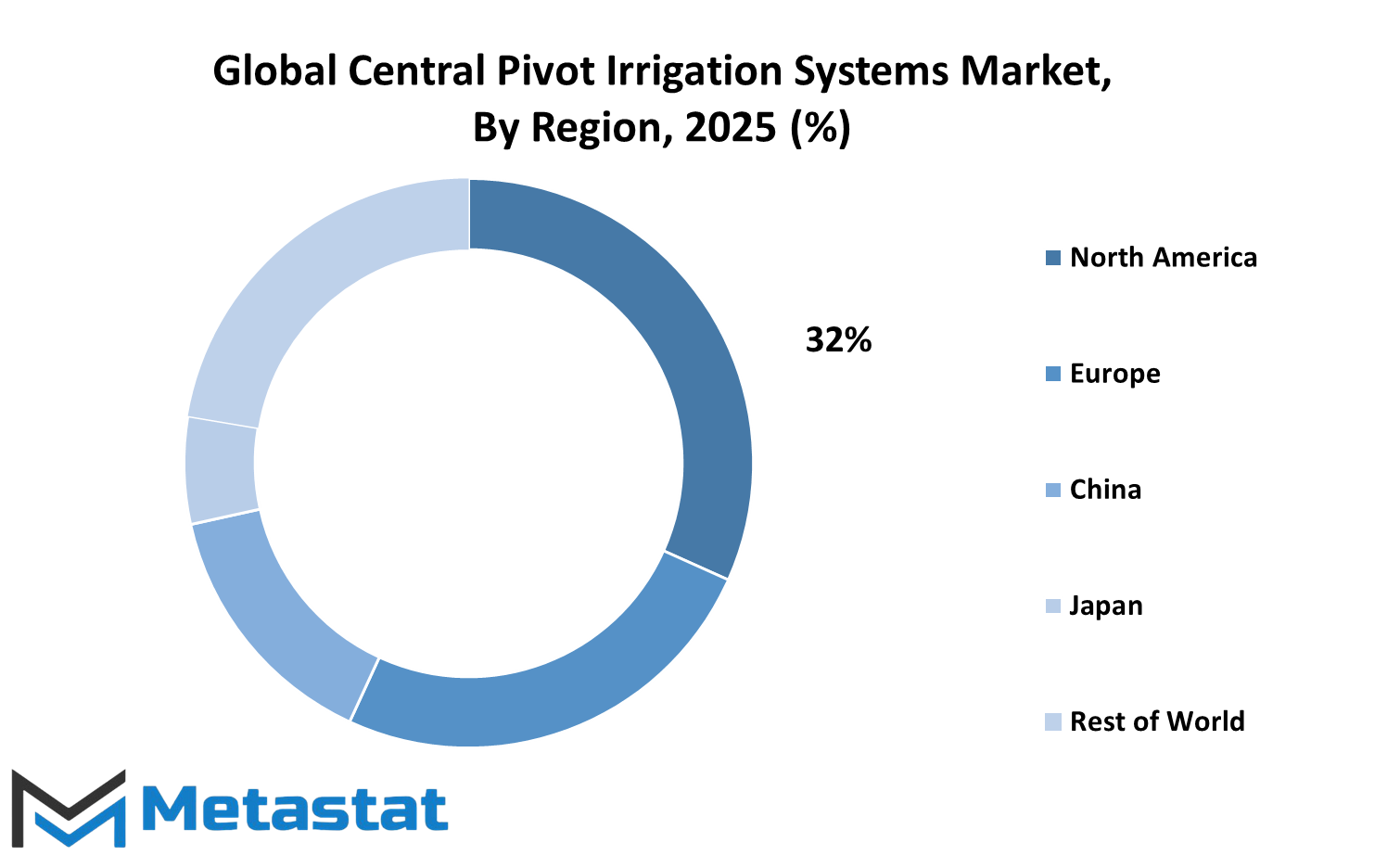
COMPETITIVE PLAYERS
In the near future, agriculture will revolve around advanced irrigation technologies, among which Global Central Pivot Irrigation Systems will provide a solid basis for sustainable water management and greater crop output due to its particular attention on irrigation and water-use efficiency. In the context of water scarcity and increasing demand for irrigation methods, companies that specialize in Global Central Pivot Irrigation Systems have been forced into competition in innovating solutions for the modern farmer.
These well-established players, including Reinke, Lindsay Corporation, and Valmont Industries, have made great strides in precision irrigation. They tend to focus on efficiency in water distribution with its wider waste reduction as well as automation in order to ease the burden on the operators. With the assistance of sensors and real-time data assessment, these companies equip farmers for making decisions that yield more with less.
Other forces such as T-L Irrigation, PIERCE, and Atlantis investigate alternative materials and designs that will further bolster durability and adaptability of irrigation systems. These companies actually work toward making irrigation more reliable for farmers scattered across different climatic conditions and soil types, thereby enhancing irrigation acceptance. This competition has led to continual improvements encouraging efficient and cost-effective solutions for agricultural demands.
Smart irrigation technologies are being introduced by Zhonghui (Dalian) Irrigation Equipment, BAUER, and Upton Engineering. Advancements in technology integrate both remote monitoring and automated controls, which in turn greatly reduce manual intervention. Farmers can now control their irrigation systems from any site and change settings depending on weather forecasts and soil moisture levels, thus greatly preserving water with optimized energy consumption, thus, sustainability.
Driptech India Pvt. Ltd., Hunter Industries, and Jain Irrigation Systems Ltd. focus on expanding irrigation access to small-scale farmers. Their systems are designed to be affordable and easy to implement, ensuring that farmers with limited resources can also benefit from modern irrigation techniques. By bridging the gap between technology and accessibility, they contribute to global food security and agricultural sustainability.
Nelson Irrigation Corporation, Netafim Ltd., and Premier Irrigation Adritec Pvt. Ltd. emphasize research-driven innovations. Their commitment to refining existing models and introducing breakthrough irrigation methods has positioned them as frontrunners in the industry. Meanwhile, Rain Bird Corporation, Rainfine (Dalian) Irrigation Co., Ltd., and Rivulis Irrigation Ltd. continue to develop solutions that prioritize efficiency without compromising performance.
As Global Central Pivot Irrigation Systems continue to evolve, competition among these players will however bring about more innovation for the betterment of the irrigation industry.
Central Pivot Irrigation Systems Market Key Segments:
By Type
- Small Field (up to 3 hectares)
- Medium Field (3 hectares to 25 hectares)
- Large Field (more than 25 hectares)
By Crop Type
- Cereals
- Oilseeds and Pulses
- Others
By Mobility
- Stationary
- Mobile
By Components
- Pivot Points
- Control Panels
- Span
- Sprinkler Drop
- Tower Drive Wheels
- Drive Train
Key Global Central Pivot Irrigation Systems Industry Players
- Reinke
- Lindsay Corporation
- Valmont Industries
- T-L Irrigation
- PIERCE
- Atlantis
- Zhonghui (Dalian) Irrigation Equipment
- BAUER
- Upton Engineering
- Driptech India Pvt. Ltd.
- Hunter Industries, Inc.
- Jain Irrigation Systems Ltd.
- Nelson Irrigation Corporation
- Netafim Ltd.
- Premier Irrigation Adritec Pvt., Ltd.
- Rain Bird Corporation.
- Rainfine (Dalian) Irrigation Co., Ltd.
- Rivulis Irrigation Ltd.
- The Toro Company
- Vodar (Tianjin) Co., Ltd.
WHAT REPORT PROVIDES
- Full in-depth analysis of the parent Industry
- Important changes in market and its dynamics
- Segmentation details of the market
- Former, on-going, and projected market analysis in terms of volume and value
- Assessment of niche industry developments
- Market share analysis
- Key strategies of major players
- Emerging segments and regional growth potential



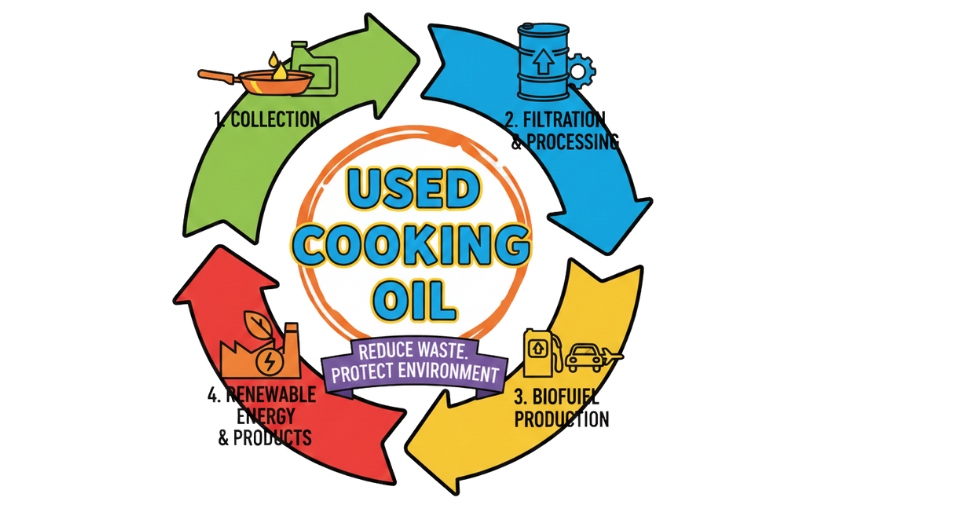
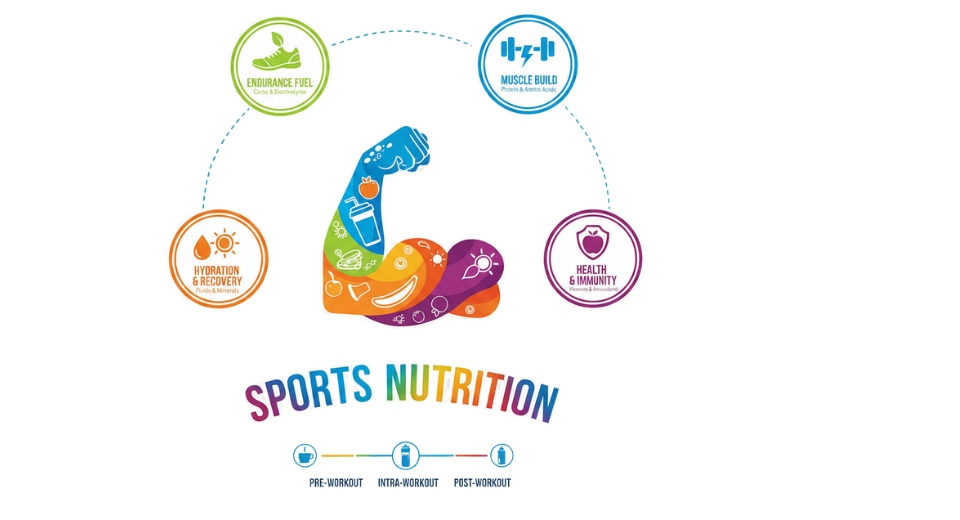
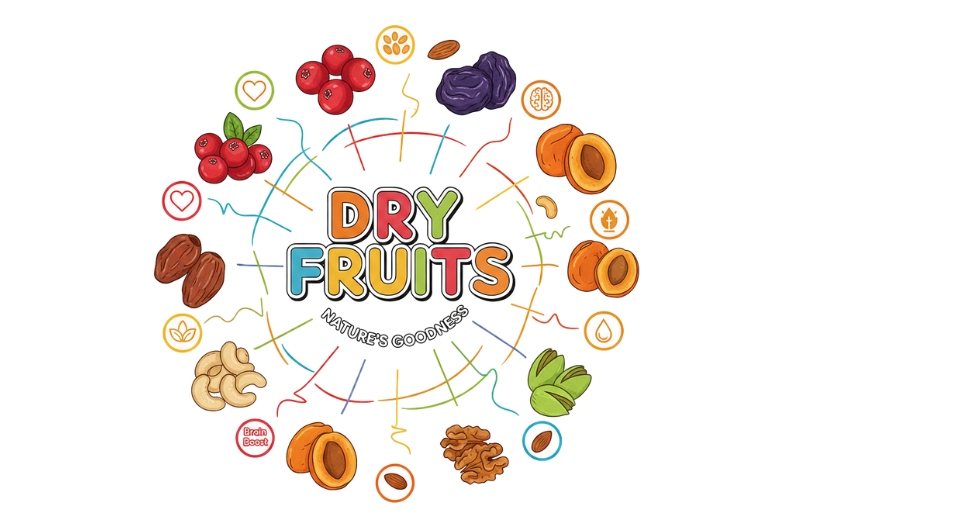


 US: +1 3023308252
US: +1 3023308252






